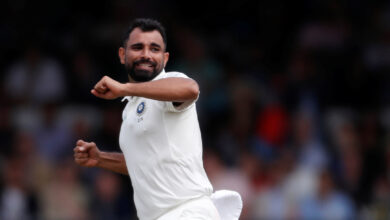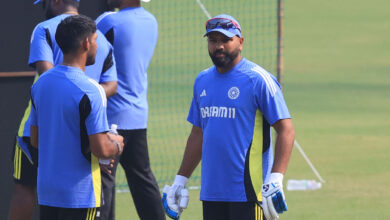Paris Olympics: India’s hockey team lost half of its matches in Europe but there’s no reason to panic | Hockey News

Few things in Indian sport are as secretly guarded these days as the Paris preparation of the hockey team. Back in SAI Bangalore, their Olympics training base, cameras are prohibited during training, the entry of outsiders is regulated and players are careful what they reveal – more importantly, what they don’t.The hush-hush nature of Craig Fulton’s preparations for next month’s Games extended to London. Last Saturday, when asked in a mid-game interview against Germany why he hadn’t used one of his substitutes, Jarmanpreet Singh, for the entire first half – a rarity in hockey given the luxury of rolling subs – Fulton smiled and replied: “Top secret”.
all accounts, it is evident that the chief coach is holding a few cards close to his chest, hoping to reveal them only in Paris. Going the results of the Europe leg of the Pro League, where India played eight matches in Antwerp and London against Belgium, Argentina, Britain and Germany, they better have one.
Because if this is the best – or close to the best – they have, India will find it extremely tough to improve on the Tokyo Olympics bronze medal finish.
The Harmanpreet Singh-led side lost half of the matches, won two and drew two. The two wins came against an under-strength Germany (when the world champions fielded their full team, India lost) and Argentina, where India had anxious moments late in the match. They couldn’t beat Belgium or Britain, a team that is a genuine medal contender. On the surface, this might set off alarm bells. But there is no reason to panic yet.
Ahead of London 2012, India won a series of inconsequential matches but bombed at the Olympics, finishing 12th. Four years later, the team did remarkably well in the build-up, even conjuring up one of their best performances against Australia in the last decade weeks before the Games, but in Rio, they couldn’t go beyond the quarterfinals.
In a way, the results in these glorified exhibition matches will keep India’s players grounded. They also support Fulton’s claim that he has designed the ‘training and competition blocks’ in a way that the team will peak in Paris. This isn’t to say these matches were completely meaningless.
Manpreet in defence?
Fulton used these matches to simulate possible match situations and improve the bench strength. But the eight games – and five matches before this in Australia – are a good sample size to conclude that while PR Sreejesh remains the most influential player on the field, the defenders in front of him will have to raise their game.
The back line hasn’t been alert from the get-go, conceding six goals in the first 10 or 11 minutes of the matches – four of them were scored between the first and third minutes. There have been far too many basic errors in the form of missed trapping, poor decision-making and sometimes, turning their back to the ball.
A centre-half, Manpreet Singh has played as a defender and an attacking midfielder in the Indian hockey team recently. (PHOTO: Hockey India)
Jarmanpreet, Jugraj Singh and Amit Rohidas are all prone to makes, and there were times when Harmanpreet also did not look assured. Sumit is going through a purple patch but India will need more from all defenders.
Will Fulton make Manpreet Singh, a clean tackler and someone who rarely bungles up, retreat to the back line, especially against Australia and the European giants? It’s not totally out of the realm of possibility.
Sukhjeet, Abhishek, Gurjant: The attacking trio
These matches also showed that a bulk of meaningful attacks came when forwards Sukhjeet Singh, Abhishek and Gurjant Singh (even though he is error-prone) combined in the final third. They have been at the receiving end of some of Hardik Singh’s delightful passes along with Harmanpreet and Manpreet’s pin-point aerial balls – a tactic that India are employing more than ever.
The standout feature of these matches, compared to the earlier ones, was they were unafraid to take a shot, were willing to put their bodies on the line and slide on the turf to get a deflection. The six-foot-plus Araijeet Singh Hundal’s height factor adds another dimension to India’s attack.
Twelve out of the 18 goals India scored in the eight matches were field goals, a welcome sign given how much the team has been struggling to get this right.
More penalty corner variations?
This also takes some pressure off Harmanpreet, on whose drag-flicks India relies a little too much. There have been times when India have found it tough to score when Harmanpreet didn’t get his flicks right; the World Cup last year is the most recent example.
Whether Fulton picks Jugraj as a drag-flicking alternate, someone who can share the burden with Harmanpreet, remains to be seen. India’s penalty corners were too one-dimensional and there were problems at times with the injections and trapping.
In training, when no one’s watching, India have been working on a few variations for months. None of them have been showcased yet. It could be because they haven’t been able to nail the drills in the training ground. It could also be that Fulton wants to spring a surprise in Paris.
His plans, at the moment, are Indian hockey’s best-kept secret.







